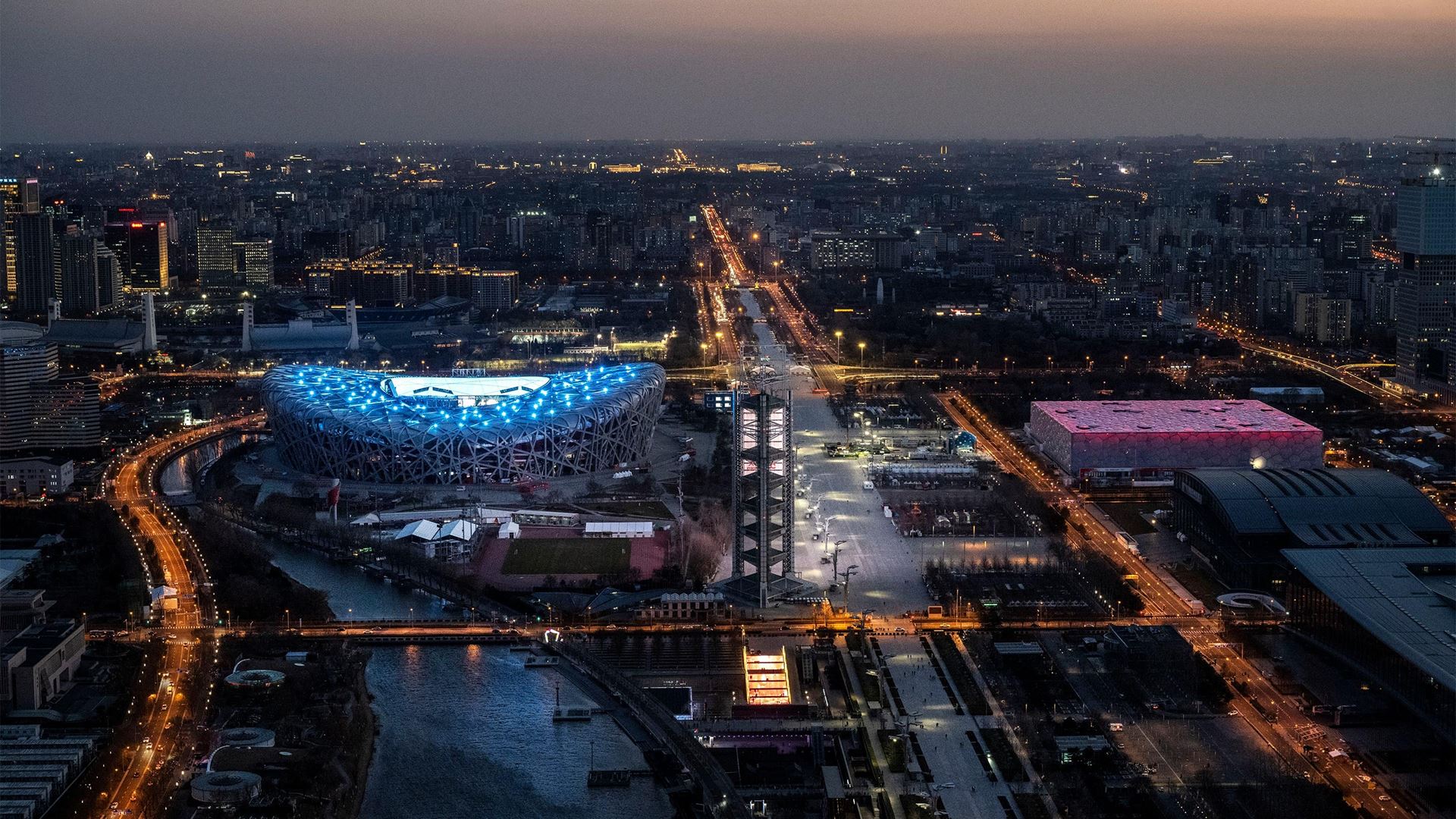General
- Dates: 4-20 February 2022.
- Approximately 90 National Olympic Committees (NOCs) are expected to participate.
- Around 2,900 athletes will compete.
- Expected gender balance – 55 per cent male / 45 per cent female - most gender-balanced edition of the Olympic Winter Games to date.
- 420 athletes from 78 NOCs have been awarded Olympic Solidarity Beijing 2022 individual scholarships.
- 13 NOCs are benefitting from the Beijing 2022 scholarship tailor-made option.
- 109 events in seven Olympic winter sports
- 12 will be mixed gender/open events (11 mixed gender/1 open event).
- The programme features the addition of new monobob and freestyle ski big air events, as well as mixed team formats, including short track mixed relay, a ski jumping mixed team event, mixed gender team aerials and a snowboard cross mixed team event.
- Three competition zones: Beijing, Yanqing and Zhangjiakou.
- 13 competition venues.
- More than one million applications were received for volunteer positions for the Beijing 2022 Games.
- The IOC is contributing USD 880 million to the success of the Beijing 2022 Games.
Olympic Torch Relay
- Beijing is the first city to welcome the Olympic flame for both summer and winter editions of the Olympic Games.
- The Olympic flame was lit in Ancient Olympia on 18 October 2021.
- The Olympic flame arrived in China on 20 October, and has been on display in various locations in its safety lantern.
- A traditional Olympic Torch Relay will take place for the three days prior to the Opening Ceremony, which will be held on 4 February.
- Approximately 1,200 torchbearers will carry the flame in the Beijing, Zhangjiakou and Yanqing competition zones.
COVID-19 prevention
- The Beijing 2022 Playbooks offer detailed countermeasures, based on science, to mitigate COVID-19 risks.
- The Playbooks build upon the experience of the International Sports Federations, other sports organisers and the measures implemented during the Tokyo 2020 Games.
- There will be sport-specific regulations to minimise any impact of COVID-19 on competitions.
Legacy
- Beijing 2022 is aiming to engage 300 million people with winter sport, accelerating the growth of China’s winter sports industry and boosting tourism in the Yanqing and Zhangjiakou competition zones.
- In the 2020 – 2021 season, the number of people engaged with ice and snow sports across China reached 230 million, and the income of ice and snow tourism exceeded RMB 390 billion, according to the Beijing 2022 Pre-Games Sustainability Report.
- Five of the seven venues in the Beijing 2022 competition zone will be legacy venues from Beijing 2008, including the iconic “Bird’s Nest” National Stadium – which will host the Opening and Closing Ceremonies – and the Water Cube, which has been transformed from the Beijing 2008 swimming venue to the Ice Cube, to host the curling competitions.
- The number of winter sports venues is on the rise across the country. By the end of 2020, there were almost 1,200 ice rinks – compared to 609 in 2018 – and more than 700 ski venues – up from 524 in 2018.
- Beijing 2022 is helping transform rural suburbs of Beijing into four-season tourism destinations – boosting the local economy and improving local livelihoods.
- In 2019, Zhangjiakou received more than 86 million tourists and revenue of over RMB 100 million, up by more than 20 per cent on the previous year.
- In 2019, Yanqing District welcomed over 17 million tourists, an increase of 6 per cent on the previous year, and tourist revenue of more than RMB 1 billion.
Education
- A total of 2,897 primary and secondary schools across China had included Olympic and Paralympic education, as well as winter sports in their curriculum by the end of 2021.
- Through the Beijing 2022 Olympic and Paralympic Education series, the Olympic and Paralympic values will be shared in 400 schools across Beijing.
Sustainability
- Click here to read Beijing 2022’s Pre-Games Sustainability Report.
- With the vision of “sustainability for the future” and the principle of hosting “green, inclusive, open and clean” Games, Beijing 2022 aims to stage Games that have positive environmental, economic and social impacts.
- Beijing 2022 has committed to staging carbon-neutral Games. It has implemented measures to reduce its carbon emissions, including low-carbon venues and transport solutions.
- Carbon compensation measures include afforestation projects in Beijing and Zhangjiakou. Since 2014, Beijing and Zhangjiakou have planted 46,000 and 33,000 hectares of forest and green areas respectively.
- Beijing 2022 is making full use of existing venues and prioritising sustainability when building and operating new venues.
- Beijing 2022 will be the first Olympic Games to have all venues powered by renewable energy, with solar and wind as primary energy sources, thanks to the newly-built Zhangbei flexible direct current grid.
- Natural CO2 refrigeration systems will be used at most Beijing 2022 ice venues – the first time this low climate impact technology will be used in China and at the Olympic Winter Games. Refrigerant R449, which has a low Global Warming Potential, will be used at the ice hockey and curling venues.
- Energy-saving and clean-energy vehicles will account for 100 per cent of all passenger cars and 84.9 per cent of all vehicles. The Beijing 2022 fleet will include 816 hydrogen-fuelled vehicles, 370 pure electric vehicles, 478 natural gas-fuelled vehicles, 1,807 hybrid vehicles and 619 conventional-energy vehicles.
Gender Equality
- Beijing 2022 will be the most gender-balanced Olympic Winter Games to date, with women expected to account for 45 per cent of the athletes.
- The Beijing 2022 competition schedule builds on key advances made to the PyeongChang 2018 competition schedule:
- Two women’s events have been moved to Day 15 to increase the number of hours of women’s sport on the penultimate day.
- Beijing 2022 will also boast the highest number of women’s events ever, with the addition of two women’s events and four mixed-team events. The new women’s events are:
- Women’s monobob (bobsleigh)
- Women’s big air skiing (as well as for men)
This will increase the percentage of women’s events in the Olympic programme to 47 per cent.
- Gender balance will be reached in skeleton, individual luge, speed skating, cross-country skiing, alpine skiing, freestyle skiing and snowboard.

